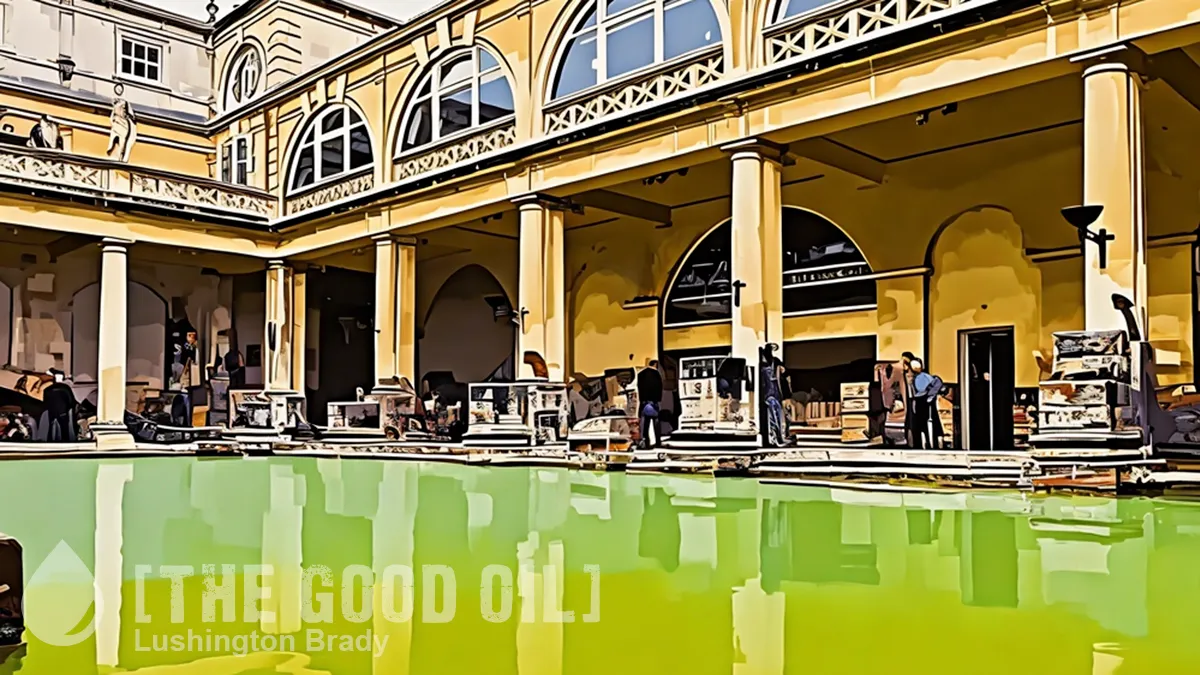Table of Contents
I often refer to Communist China as the Nazi Germany of the 21st century. This is not intended as mere hyperbole, but a solemn warning. A new book on Chinese history and Chinese Communist Party ideology lends weight to the warning.
In the Politeia, Plato urged the Ideal State to embrace a “noble lie”: a myth knowingly propagated by the elite to maintain social harmony and advance the interests of the state. The CCP is extravagant with its (ig)noble lies.
Bill Hayton’s The Invention of China argues that the idea of “China” as a unified country and people is the recent creation of the ruling Communist elite.
How, after all, does Xi Jinping square “Socialism with Chinese Characteristics” with the ruthless, staggeringly murderous rule of Mao – who is still openly deified by the CCP?
The Party has, over the past forty years, progressively stitched together a new totalitarian ideology. We could call it imperialist-Leninism. This despotic worldview binds the people of the PRC together in a racialist form of nationalism that, once again, directs them towards the centre of all things—in this case, General Secretary Xi Jinping, elevated to the status of “Helmsman” by the CCP’s Central Committee as recently as last October.
The latter-day CCP ideologues have discarded some of their old Marxist standbys and borrowed heavily from the canards of reformers and revolutionaries living in the final decades of the Qing Great-State. These intellectual rebels devised racialist and Social Darwinist myths about a long, uninterrupted history of “Chinese culture” that has no connection to reality. The great conceptual innovation of the Party in the post-Mao era, according to Hayton, has been to build on these century-old fabrications to create a racialist nationalism that conveniently intertwines notions of “China”, “the people”, “the government”, “the nation-state” and “the Party”. Or as Xi Jinping put it in the closing speech of the 2018 National People’s Congress: “The Communist Party will always be the backbone of the Chinese people and the Chinese nation.” This worldview has become so persuasive and pervasive in the PRC that slating the Party is now tantamount to betraying the Chinese people. Joseph Goebbels, if he were still amongst us, would be impressed.
Indeed, speaking of Goebbels and the ideology he served, Hayton argues that the CCP has more in common with the Nazis than just a predilection for concentration camps and mass murder.
What should we call this new political ideology, one that features a single “core” leader, insistent demands for natural homogeneity, intolerance of difference, rule by party not by law, corporativist economic policies, a focus on discipline and an ideology based on tactical exceptionalism—all backed up by a massive surveillance state? China’s Communist Party has long talked of building “socialism with Chinese characteristics”.
Xi Jinping now seems more interested in building “national-socialism with Chinese characteristics”.
Just as the Nazis drew on 19th century German intellectual currents, from the Social Darwinism of biologist Ernst Haeckel to the Völkisch movement, the CCP has carefully woven a fabricated pseudo-history of China.
So much we think we know about China, including its very name, was fabricated by reformers and revolutionaries during the latter stages of the Qing Dynasty (1644 to 1912) or, as Hayton refers to it, the Qing Great-State. He calls it the Qing Great-State because the subjects of Qing emperors, like the subjects of the Ming emperors and every other dynastic ruler before them, had no concept of loyalty beyond “allegiance to the ruler”[…]
The Qing Great-State, like the Ming Great-State before it (1368 to 1644), was not a nation-state in the European sense. There was a fuzziness about territorial boundaries on the part of the Qing Great-State when it came to negotiating with rival empires. This was not a matter of being flexible or benevolent—quite the opposite, in fact. The rulers of the Qing Great-State believed they governed “all under heaven” (tianxia) and all who dwelled beyond their realm were more-or-less uncivilised.
This attitude persists in China today. China is the “Middle Kingdom”: the natural centre of the world. Non-Chinese are gwáilóu: “foreign devils”. Even the official name, Zhongguo, is best translated as “centre-of-the-world”. “It is really,” says Hayton. “A description of a political hierarchy between ‘us’ on the inside and ‘them’ on the outside.”
The CCP ideology is as racist as is it nationalistic:
China’s turn-of-the-century revolutionaries took the survival-of-the-fittest racialism of Spencer, with its discriminatory generalities about the white race, the yellow race and so on, and re-purposed it for their own chauvinistic awakening.
The other great lie of the CCP is the “Century of Humiliation” myth it uses to perpetuate the Chinese sense of aggrievement against the “foreign devils”.
The Hundred Years of Humiliation concept began as a call to patriotism for a people or peoples who had never been patriotic. A person’s loyalty was for the existing dynastic ruler, not for a place on the map. Nevertheless, some will argue—as Xi Jinping’s regime does—that what differentiates China from the rest of the world and makes it superior is a 5000-year-old civilisation that originates with the mythical Yellow Emperor. Only this is a fantasy[…]
Moreover, “China”—again as we broadly conceive it—is also a legacy of the Qing Great-State, one of the more rapacious empires in history. One of the reasons that Xinjiang, Tibet and Taiwan, to name but three territories, are claimed by today’s imperialist-Leninists in Beijing is only because at an earlier time grasping Qing rulers pinched them.
The PRC is an imperialist state built upon the vestiges of an earlier imperialist state. Thus, when Mao Zedong ordered military forces into Tibet and Xinjiang in 1950 to enforce martial law it was less an act of liberation than occupation. All the brutality that has followed from that time, the ongoing oppression of the Tibetan people and the re-education camps in Xinjiang, has the tint of genocide.
China’s imperialism isn’t finished yet, as Taiwan, to name but one (currently) free state well knows.
President Xi, backed by the People’s Liberation Army Navy, is claiming the entirety of the South China Sea as a sacred and integral part of a continuous and superior civilisation that has its origins in the time of the Yellow Emperor.
Quadrant
Despite China’s armed skirmishes with India, brutal crackdown in Hong Kong, genocide in Xinjiang, attacks on foreign fishing vessels, and trade and diplomatic bullying of Australia, Beijing’s mouthpieces babble that “China’s peaceful development is an opportunity, not a threat to the world”.
Then again, Adolf Hitler said, hand on heart, that “National Socialist Germany wants peace out of its innermost ideological convictions”.
Please share this article so that others can discover The BFD









